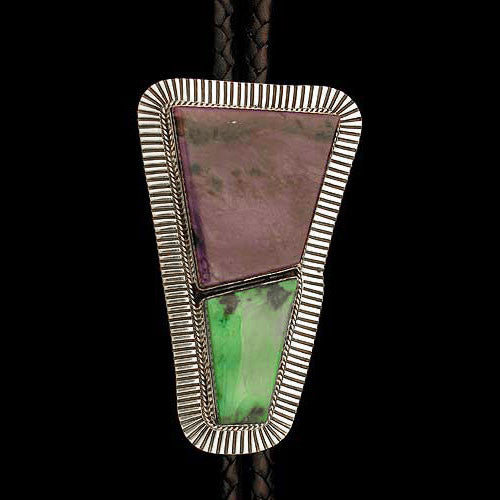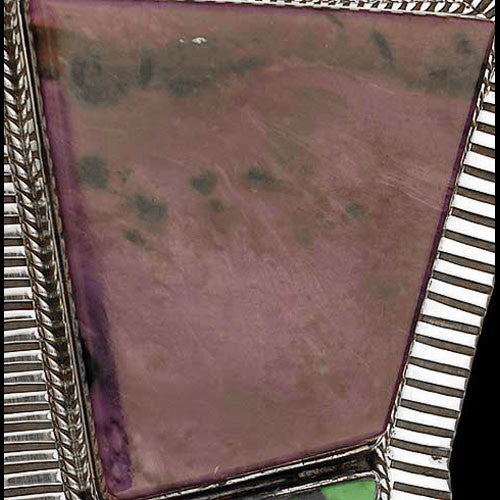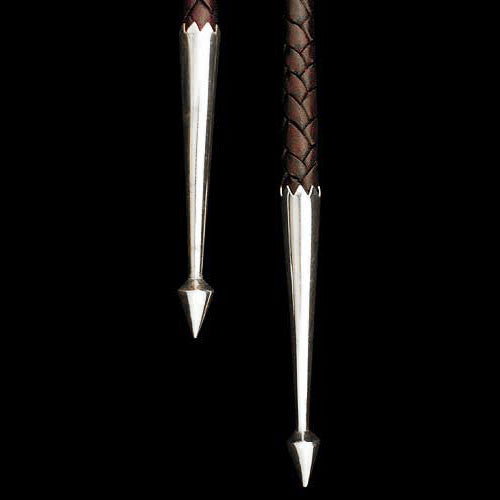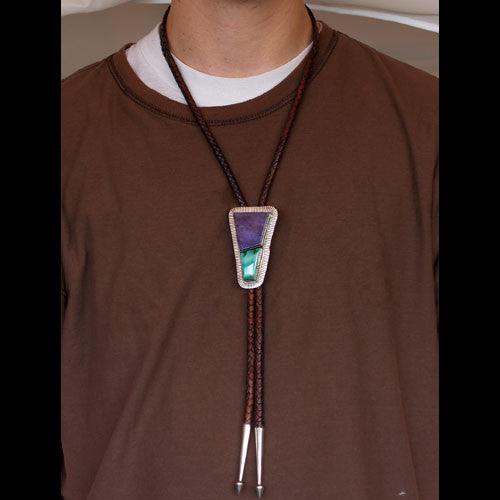




Navajo Persian Turquoise and Sugilite Bolo Tie - Albert Jake (#023)
$2,100.00
Artist: Albert Jake
Navajo Jewelry
Persian Turquoise & Sugilite set in
Sterling Silver Slide on
Purple Leather Bolo Tie
Slide: 1 7/8" x 3"
Bolo: 48" long
Albert Jake decided to take a hunk of sugilite and a hunk of Persian turquoise and make a contemporary bolo tie that is timeless in its design. Albert knows you don’t want to complicate the silver work when you have stones like this. He has therefore used clean, simple stamping and a foundational shape to show off his skills. Very nice indeed.
We offer a 100% satisfaction guarantee on every purchase.
Persian Turquoise
In the Southwest, we tend to take turquoise for granted; yet it has been labeled the “Gemstone of the Centuries”. Over 7,500 years ago, slave convoys were sent into the Sinai Peninsula to pluck pieces of the blue gem from the rocks where it had formed. In ancient Egypt, turquoise was believed to have mystical powers and appeared in amulets and talisman representing their gods Amum and Isis. A gold and carved turquoise bracelet was found on the mummified arm of Queen Zer, a ruler during the first dynasty of Egyptian pharaohs. The four bracelets found in her burial are the earliest known examples of precious metal jewelry.
The Middle East emerged as the great purveyor of turquoise, supplying the ancient Egyptians, Nubians, Greeks and Romans. It is believed the name was derived from the French word, Turquie, a reference to the Turkish traders first bringing the rich blue stones to the European continent. It was assumed that the brilliant blue and green stones originated in Turkey when, in fact, they were most likely extracted from mines in the Sinai Peninsula and the Alimersai Mountain in Persia (Iran).
About the artist:
Since 1959, Albert Jake has made his home in the beautiful country located about forty miles south of Gallup, New Mexico. He was born at Zuni Pueblo and has resided in the village of Ramah for many years. Albert’s parent taught him the many steps to fine Navajo silverwork which includes both cluster jewelry as well as beautiful stones in classic Navajo settings.
Related legends:
Silversmith Work
When and how the Navajo acquired the art of working metals is unknown but there are reasons for supposing that it was introduced among them, or at least more developed and improved upon by them, since the time they have occupied their present country?
